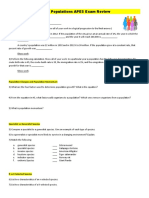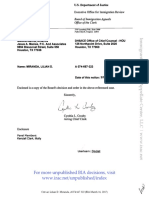Segmentation, Targeting, and Positioning
Learning Goals
1. Learn the three steps of target marketing, market segmentation, target marketing, and market positioning 2. Understand the major bases for segmenting consumer and business marketing strategy 3. Know how companies identify attractive market segments and choose target marketing strategy 4. Realize how companies position their products for maximum competitive advantage in the marketplace
7-1
�Surf Excel Close Up Sunsilk Vim
Clear Lifebuoy Vaseline Rexona
7-3
��The STP Process
Segmentation is the process of classifying customers into groups which share some common characteristic Targeting involves the process of evaluating each
segments attractiveness and selecting one or more
segments to enter Positioning is arranging for a product to occupy a clear, distinctive and desirable place relative to competing products in the mind of the consumer
�Steps in market segmentation, targeting and positioning
Market Segmentation
Identify bases for segmenting the market Develop segment profiles
Target Marketing
Develop measure of segment attractiveness Select target segments
Market Positioning
Develop positioning for target segments Develop a marketing mix for each segment
Goal 1: Learn the three steps of target marketing
7-6
�Definition
Market Segmentation:
Dividing a market into distinct groups with distinct needs, characteristics, or behavior who might require separate products or marketing mixes.
Goal 2: Understand the major bases for segmentation
7-7
�Segmenting Consumer Markets
Geographical segmentation Demographic segmentation
Most popular segmentation
Psychographic segmentation
Lifestyle, social class, and personality-based segmentation
Behavioral segmentation
Goal 2: Understand the major bases for segmentation
7-8
�Geographic Segmentation Variables
World Region Pakistan Province City Neighborhood City or metro size Density Climate
Goal 2: Understand the major bases for segmentation
7-9
�Demographic Segmentation Variables
Age Gender Family size Family life cycle Income Occupation Education Religion Race Generation Nationality
Goal 2: Understand the major bases for segmentation
7 - 10
�Behavioral Segmentation Variables
Occasions Benefits User Status Attitude Toward the Product User Rates Loyalty Status Readiness Stage
Goal 2: Understand the major bases for segmentation
7 - 11
�Segmenting Business Markets
Demographic segmentation
Industry, company size, location
Operating variables
Technology, usage status, customer capabilities
Purchasing approaches Situational factors
Urgency, specific application, size of order
Personal characteristics
Buyer-seller similarity, attitudes toward risk, loyalty
Goal 2: Understand the major bases for segmentation
7 - 12
�Segmenting International Markets
Geographic segmentation
Location or region
Economic factors
Population income or level of economic development
Political and legal factors
Type / stability of government, monetary regulations, amount of bureaucracy, etc.
Cultural factors
Language, religion, values, attitudes, customs, behavioral patterns
Goal 2: Understand the major bases for segmentation
7 - 13
�Requirements for Effective Segmentation
Measurable
Size, purchasing power, and profile of segment
Accessible
Can be reached and served
Substantial
Large and profitable enough to serve
Differentiable
Respond differently
Actionable
Effective programs can be developed
Goal 2: Understand the major bases for segmentation
7 - 14
�Target Marketing
Target Market
Consists of a set of buyers who share common needs or characteristics that the company decides to serve
Goal 3: Know how companies identify and target attractive segments
7 - 15
�Target Marketing
Evaluating Market Segments
Segment size and growth Segment structural attractiveness
Level of competition Substitute products Power of buyers Powerful suppliers
Company objectives and resources
Goal 3: Know how companies identify and target attractive segments
7 - 16
�Target Marketing
Selecting Target Market Segments
Undifferentiated (mass) marketing Differentiated (segmented) marketing Concentrated (niche) marketing Micromarketing (local or individual)
Goal 3: Know how companies identify and target attractive segments
7 - 17
�Choosing a Target Marketing Strategy
Considerations include:
Company resources The degree of product variability Products life-cycle stage Market variability Competitors marketing strategies
Goal 3: Know how companies identify and target attractive segments
7 - 18
�Target Marketing
Socially Responsible Targeting
Some segments, especially children, are at special risk Many potential abuses on the Internet, including fraud Internet shoppers Controversy occurs when the methods used are questionable
Goal 3: Know how companies identify and target attractive segments
7 - 19
�Socially Responsible ???
�Positioning
Positioning:
The place the product occupies in consumers minds relative to competing products. Typically defined by consumers on the basis of important attributes. Involves implanting the brands unique benefits and differentiation in the customers mind. Positioning maps that plot perceptions of brands are commonly used.
Goal 4: Realize how companies position their products
7 - 21
�Developing a Positioning Statement
Positioning statements summarize the company or brand positioning
EXAMPLE: To (target segment and need) our (brand) is (concept) that (point-of-difference)
Goal 4: Realize how companies position their products
7 - 22
































































































